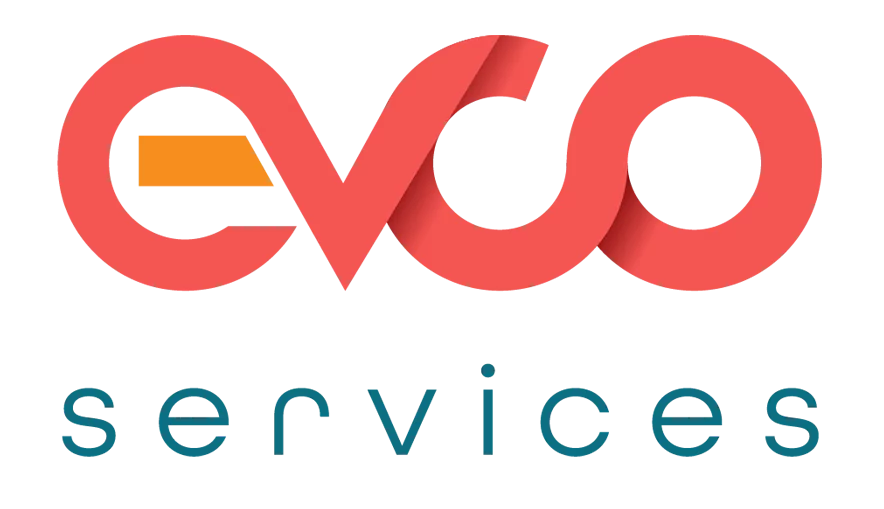Publish Date:4/1/25

A Guide for Growing Businesses
As a growing business, you have likely managed your IT internally from the beginning. Perhaps you relied on a tech-savvy team member or made do with basic systems that worked well in the early stages of your business. However, as your company expands, so do your IT requirements. That is when the idea of working with a Managed Service Provider (MSP) like EVCO comes into play.
Transitioning to an MSP can feel overwhelming, especially if you are unfamiliar with how to begin planning for this change. To help you, this blog explores how to plan and work with an MSP effectively, common mistakes to avoid, and practical steps to maximise your experience.
Why Work with an MSP?
Before diving into the planning process, it is worth understanding why businesses like yours choose to work with an MSP. MSPs provide professional IT support and management, allowing you to focus on your core operations. By partnering with an MSP, you can:
- Enhance productivity: MSPs ensure your systems are running smoothly, minimising downtime and disruptions.
- Access expert knowledge: They bring IT expertise that is often costly to maintain in-house.
- Improve cybersecurity: MSPs offer advanced security measures to protect your business from cyber threats.
- Scale your IT services: As your business grows, MSPs provide flexible solutions that adapt to your changing needs.
- Predict IT costs: MSPs typically charge a fixed monthly fee, helping you manage your budget more effectively.
Step 1: Assess Your IT Needs
The first step to working with an MSP is understanding your current IT environment and identifying areas for improvement. This will help you determine the specific services you need and make it easier to communicate your requirements to potential MSPs.
Key Questions to Ask
- What IT challenges are we currently facing (e.g., frequent downtime, slow systems, security risks)?
- Which areas of our IT infrastructure require improvement (e.g., cloud migration, data backup, remote access)?
- Do we need round-the-clock support, or is standard business-hours support sufficient?
- Are there compliance requirements we need to meet in our industry?
Creating a detailed list of your IT needs will ensure you choose an MSP that aligns with your goals and priorities.
Step 2: Research and Choose the Right MSP
Not all MSPs are the same. Choosing the right one is critical to ensuring a successful partnership. Providers like EVCO specialise in offering tailored solutions to growing businesses, making them an ideal choice for companies transitioning to professional IT management.
What to Look For in an MSP
- Experience and expertise: Look for an MSP with a proven track record and expertise in your industry.
- Customised solutions: Avoid one-size-fits-all packages. Choose a provider who takes the time to understand your business and tailors their services accordingly.
- Strong communication: Good communication is essential for a seamless partnership. Ensure the MSP has a clear process for handling support requests and providing updates.
- Scalability: Confirm that the MSP can scale their services as your business grows.
- Cybersecurity focus: Cyber threats are a growing concern. Choose an MSP that prioritises security and has robust measures in place to protect your data.
Questions to Ask Potential MSPs
- How do you tailor your services to meet the needs of growing businesses?
- What is included in your monthly fee, and are there any additional charges?
- How do you handle emergencies or unexpected issues?
- Can you provide references from businesses similar to ours?
Step 3: Set Clear Expectations
Once you have chosen an MSP, it is important to establish a strong foundation for the partnership. This starts with setting clear expectations.
Create a Service Level Agreement (SLA)
An SLA outlines the scope of services the MSP will provide, as well as performance benchmarks and response times. A well-defined SLA ensures both parties are aligned and helps prevent misunderstandings. Key elements to include in the SLA are:
- The specific services the MSP will deliver (e.g., 24/7 monitoring, data backup, cybersecurity).
- Expected response and resolution times for support requests.
- Performance metrics, such as system uptime targets.
- Reporting and communication protocols.
Agree on Communication Channels
Decide how you will communicate with the MSP. This may include email, phone, or a dedicated online portal for submitting and tracking support requests. Regular check-ins, such as monthly or quarterly reviews, can also help ensure the partnership is running smoothly.
Common Mistakes to Avoid
Many growing businesses make mistakes during the transition to working with an MSP, leading to frustration and missed opportunities. Here are some common pitfalls and how to avoid them:
1. Waiting Too Long to Partner with an MSP
Some businesses delay working with an MSP until they experience a major IT issue. By then, the problem may have already caused significant disruption.
Solution:Be proactive. Partnering with an MSP before issues arise ensures your IT systems are optimised and protected from the start.
2. Failing to Define IT Needs
Without a clear understanding of your IT requirements, you risk choosing the wrong MSP or paying for services you do not need.
Solution:Take the time to assess your current IT environment and identify areas for improvement before approaching potential MSPs.
3. Choosing an MSP Based Solely on Price
While cost is an important factor, choosing the cheapest MSP often leads to inadequate support and hidden fees.
Solution:Focus on value rather than cost alone. Consider the expertise, responsiveness, and range of services the MSP offers.
4. Overlooking Security
Cybersecurity is a critical aspect of IT management, yet some businesses fail to prioritise it when choosing an MSP.
Solution:Ensure the MSP has robust cybersecurity measures in place, including threat monitoring, data encryption, and employee training.
5. Poor Communication
Lack of communication can lead to frustration and missed opportunities to optimise your IT systems.
Solution:Choose an MSP with strong communication practices and establish regular check-ins to review performance and discuss any changes in your IT needs.
Step 4: Build a Strong Partnership
Working with an MSP is not just about outsourcing IT support. It is about building a collaborative partnership that helps your business thrive.
Treat the MSP as Part of Your Team
Involve the MSP in discussions about your business goals and challenges. The more they understand your organisation, the better they can tailor their services to meet your needs.
Regularly Review Performance
Schedule regular reviews to evaluate the MSP’s performance against the SLA. Use these meetings to address any concerns, discuss upcoming projects, and refine the partnership as needed.
Leverage Their Expertise
MSPs are not just there to fix IT issues. They can provide valuable insights into emerging technologies, process improvements, and cost-saving opportunities. Take advantage of their knowledge to optimise your IT systems.
Maximising Your Experience with EVCO
EVCO is a trusted MSP with a focus on helping growing businesses transition to professional IT management. Their tailored solutions, proactive support, and commitment to delivering measurable results make them an ideal partner for companies ready to take their IT infrastructure to the next level.
Whether you need monitoring, advanced cybersecurity, or guidance on scaling your IT systems, EVCO ensures a seamless experience that aligns with your goals and budget.
Transitioning from managing your own IT to partnering with an MSP is a significant step for any growing business. By assessing your IT needs, choosing the right provider, setting clear expectations, and building a strong partnership, you can ensure a seamless experience that maximises the value of your investment.
Providers like EVCO make it easy to navigate this transition, offering tailored support that grows with your business. With the right MSP by your side, you can focus on what you do best while leaving IT management in expert hands.






